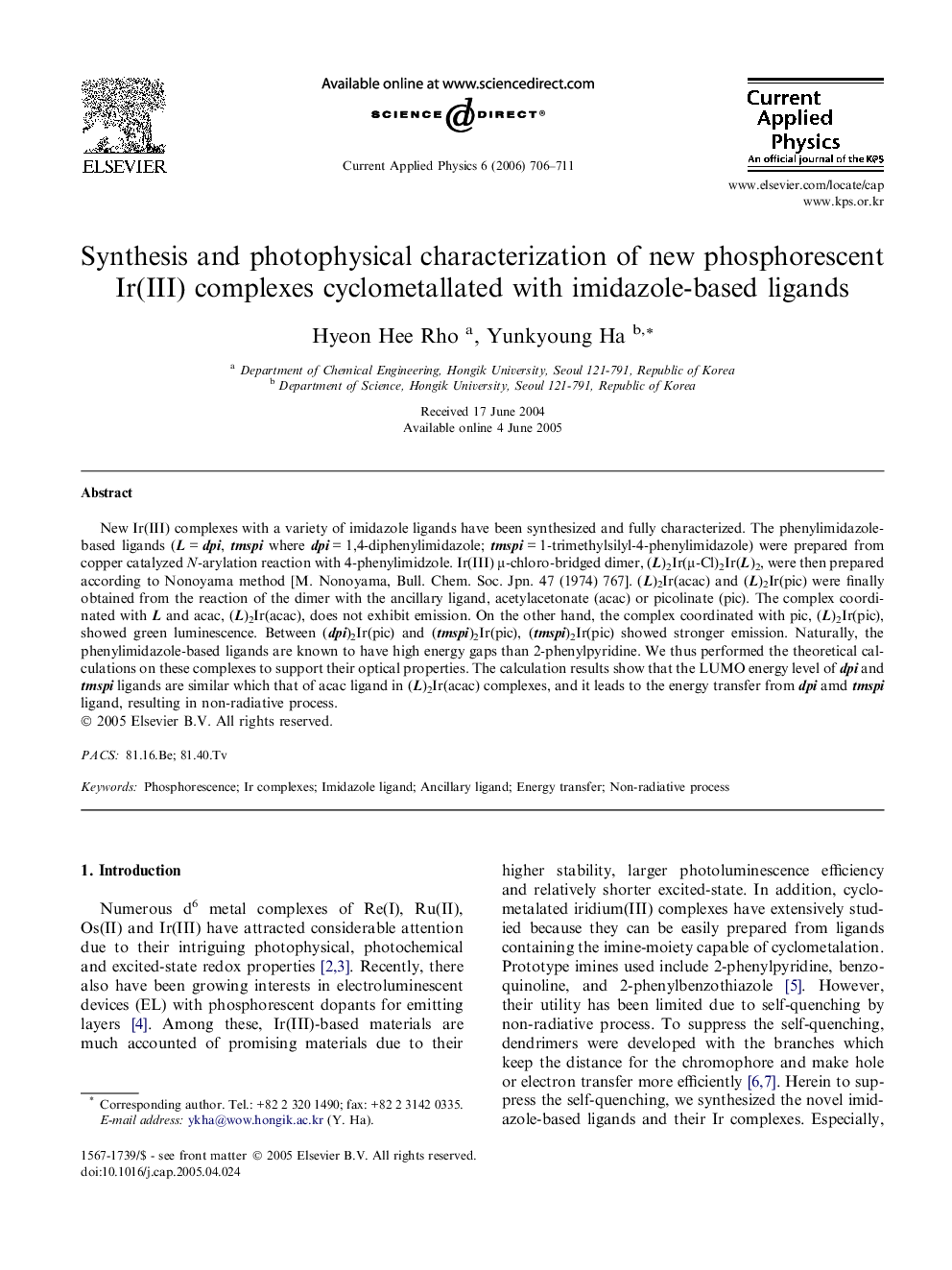| کد مقاله | کد نشریه | سال انتشار | مقاله انگلیسی | نسخه تمام متن |
|---|---|---|---|---|
| 1789191 | 1023495 | 2006 | 6 صفحه PDF | دانلود رایگان |

New Ir(III) complexes with a variety of imidazole ligands have been synthesized and fully characterized. The phenylimidazole-based ligands (L = dpi, tmspi where dpi = 1,4-diphenylimidazole; tmspi = 1-trimethylsilyl-4-phenylimidazole) were prepared from copper catalyzed N-arylation reaction with 4-phenylimidzole. Ir(III) μ-chloro-bridged dimer, (L)2Ir(μ-Cl)2Ir(L)2, were then prepared according to Nonoyama method [M. Nonoyama, Bull. Chem. Soc. Jpn. 47 (1974) 767]. (L)2Ir(acac) and (L)2Ir(pic) were finally obtained from the reaction of the dimer with the ancillary ligand, acetylacetonate (acac) or picolinate (pic). The complex coordinated with L and acac, (L)2Ir(acac), does not exhibit emission. On the other hand, the complex coordinated with pic, (L)2Ir(pic), showed green luminescence. Between (dpi)2Ir(pic) and (tmspi)2Ir(pic), (tmspi)2Ir(pic) showed stronger emission. Naturally, the phenylimidazole-based ligands are known to have high energy gaps than 2-phenylpyridine. We thus performed the theoretical calculations on these complexes to support their optical properties. The calculation results show that the LUMO energy level of dpi and tmspi ligands are similar which that of acac ligand in (L)2Ir(acac) complexes, and it leads to the energy transfer from dpi amd tmspi ligand, resulting in non-radiative process.
Journal: Current Applied Physics - Volume 6, Issue 4, July 2006, Pages 706–711